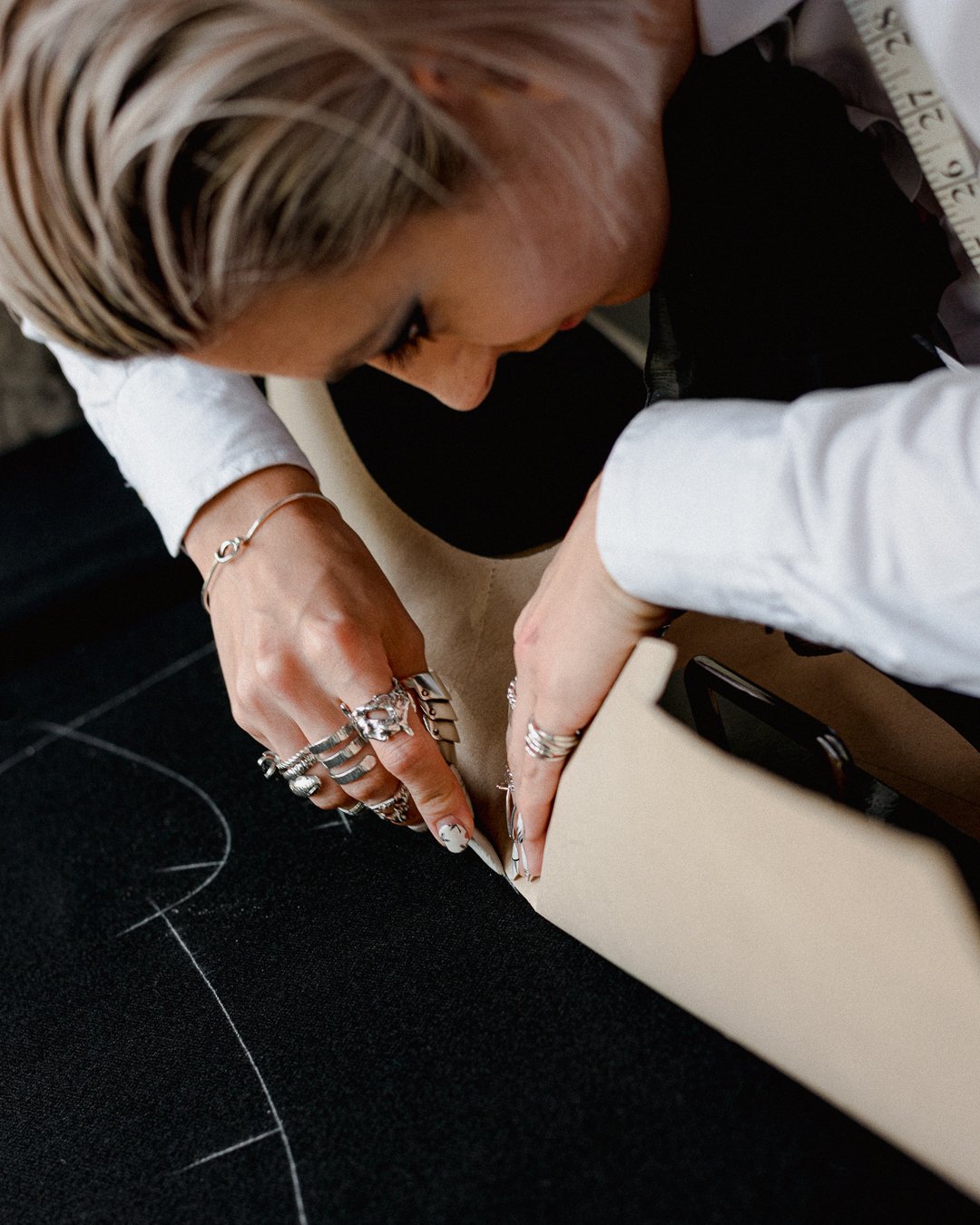The cutting edge: Kimberley Lawton Q&A
Bespoke tailoring is a very sustainable way to create clothing. Starting with a specific fabric, each garment is put together with the utmost consideration and discernment. And bespoke pieces are made to last – the result of a deliberate decision, desired and uniquely tailored for one individual. This represents a return to traditional ways of making, reconnecting our relationship with our clothes and cloth, and ultimately with the cycle of nature.
Kimberley Lawton, bespoke tailor, founder of LAWTON, spoke with us about what ignited her love of bespoke, her experiences as a Savile Row cutter, and what it takes to create a truly unique garment.
How did you acquire your skills?
I studied fashion design and pattern-cutting at college in Barnsley, Yorkshire, before moving to London to take my degree. While I was studying Bespoke Tailoring at London College of Fashion, I won the Upcoming Design Talent Award and the Shaftesbury PLC Tailoring Award. I graduated with First Class Honours and began my tailoring career at Huntsman in Savile Row, where I developed my skills in cutting over the course of a traditionally structured apprenticeship under the Head Cutter and Creative Director.
What’s your approach to creating suiting?
I always seek to capture the essential meeting point between craft and culture. LAWTON has a house style that combines the decadence of details from old Hollywood cinema with the magnetism of musical silhouettes from the seventies. A consistent promise of precision brought to life by individual portrayal. This house style accentuates the depths of each client’s individual charm. In terms of silhouette, this translates to bold sculptures, strong lines and elongated shapes that serve to strengthen and elevate the natural canvas of the body.
What attracted you to bespoke tailoring?
I found pattern-cutting the most interesting part of my course in Barnsley, and my tutor recommended that I apply for the Bespoke Tailoring course at London College of Fashion. It was there that I fell in love with the intricacies and accuracies that bespoke can achieve. My work experience with Richard Anderson and Timothy Everest made me fall for it even more. For me, it’s about being creative, but in a logical, methodical way.
The sustainability of bespoke
Although bespoke is obviously a more expensive option, the cost-per-wear of a bespoke garment is actually very low. Bespoke wear has a longevity that fast fashion cannot compete with. Bespoke suits are left with inlay at each seam, meaning that garments can be let out or taken in as a client’s body inevitably develops. Tailors also keep a measure of the original fabric in case any part of the suit needs to be replaced or repaired. One bespoke suit can easily last a lifetime – or two if properly cared for. The longevity of bespoke suiting often means that garments can be passed down through the generations, a truly sustainable quality.
Fashioning Masculinities: LAWTON at London Craft Week
Kimberley will demonstrate the skills behind the creation of a bespoke piece at London Craft Week, on the morning of May 14th, between 10.30-12.30 at the V&A Museum in London.
She will reveal the entire process, from initial consultations to the development, design and construction, sharing insider insights into this exclusive craft. Kimberley will also demonstrate how to draft and prepare a pair of bespoke trousers, showcasing the skills of a master tailor.
Click here for more details and to book your ticket for this fascinating event.










